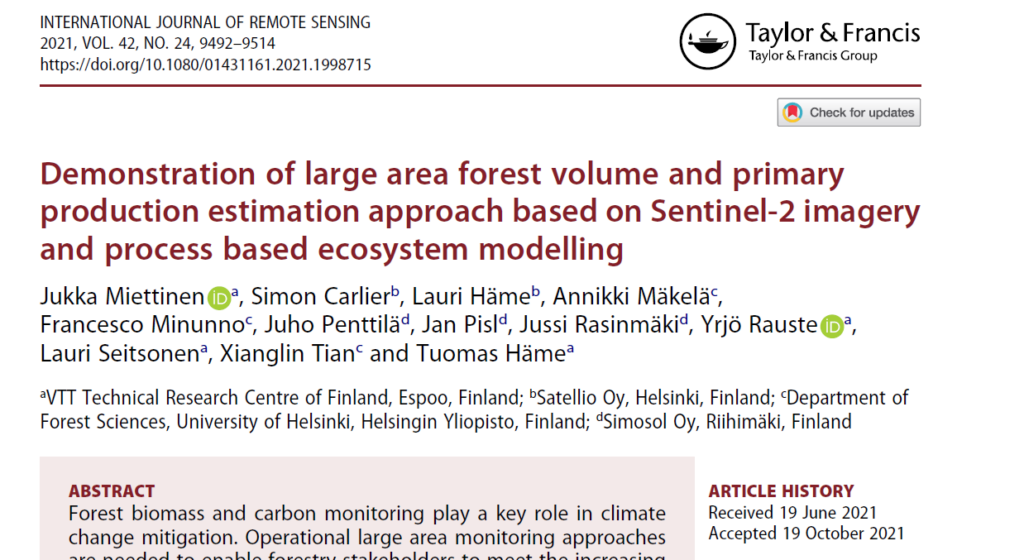Use of Forestry TEP in large area forest carbon flux monitoring

The recent article ‘Demonstration of large area forest volume and primary production estimation approach based on Sentinel-2 imagery and process based ecosystem modelling’, published in the International Journal of Remote Sensing, gives an overview of a framework for forest carbon flux monitoring implemented in Forestry TEP. The work was conducted in the ESA Assesscarbon project that we have been following in our blog posts.
The article demonstrates the functionality of a cloud based approach utilizing Sentinel-2 composite imagery and process based ecosystem model to produce large area forest volume and primary production estimates. The main components of the approach and implementation of the processing pipeline into the Forestry TEP cloud processing platform are described and four large area output maps are presented: 1) Growing stock volume (GSV), 2) Gross primary productivity (GPP), 3) Net primary productivity (NPP) and 4) Stem volume increment (SVI), covering Finland and the Russian boreal forests until the Ural Mountains in 10 m spatial resolution.
To enable the processing of the 214 Sentinel-2 tiles for the production of the output layers, a semi-automated processing pipeline was developed and implemented in Forestry TEP. In total, seven individual processing services were used in the processing pipeline, which was divided into three sections: 1) Model creation, 2) Model verification and 3) Operational production. While the ‘Model creation’ and ‘Operational production’ parts of the processing pipeline were run in an automated fashion, the ‘Model verification’ part involved visual analysis steps that enabled fine-tuning forest structural variable models to reach optimal result. The implementation of the processing pipeline into the platform illustrates well the potential of Forestry TEP in accommodating sophisticated scientific analysis algorithms into the mass processing pipelines.
The demonstration reported in the article lays a good foundation for further development in the newly started Forest Carbon Monitoring project, which will also use Forestry TEP as the cloud processing environment. If you are interested in reading further about the process-based ecosystem models and their use in forest carbon flux estimation, you can also read a recent blog post ‘Are carbon flux products reliable?’ on the EU Forest Flux project website.
